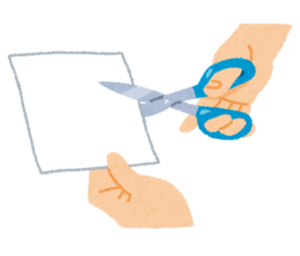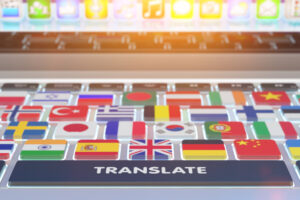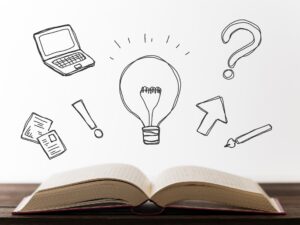Note: This blog post was originally written in Japanese for our Japanese website. We used our machine translation platform Translation Designer to translate it and post-edit the content in English. The original Japanese post can be found here.
Speaking of machine translation, the image of Google Translate was generally strong. But we feel that it has been changing in the last few years. In the past, when talking to people outside of the translation and localization industry, machine translation engines were rarely mentioned.
But lately, especially since the pandemic, we've been hearing DeepL being mentioned in conversations. After all, the number of people working remotely is increasing, and it may be that digital transformation in workplaces is inevitably progressing.
As more machine translation engines emerge and the industry gets more competitive, translation quality has improved dramatically compared to 10 years ago. However, depending on the content, we feel that some editing is still necessary.
Even if you don't work on translation as a job, you probably have done some kind of editing (revising) of the machine translation output. That editing work is called "post-editing" in our industry. Literally, it is editing the translation results after machine translating a document.
In this post, we are going to discuss about post-editing the machine translation from Japanese to English. Whether your job is directly related to translation work or just communicating with overseas companies, post-editing skills will come in handy. You'll be able to speed up your work by following a few tricks. Let's go over what we would like everyone to try!

Translate the title later
There are many things that need to be translated into English. It could be a presentation, email, or blog post like the one you're reading right now. The title or subject comes first in any document, but it is no exaggeration to say that this translation is the most difficult.
You might have noticed that Japanese and English titles are slightly different. In English, a simple and concrete one is preferred. Take our blog post for an example.
Example:
| Japanese title: 翻訳会社との上手な付き合い方 Vol 11 ~動画翻訳編~ English title: 4 Basics to Remember When Requesting Video Localization Services |
Looking at the Japanese title, if you’re familiar with the Japanese culture, you'll probably be able to imagine the content right away. However, when you translate it into English, it will seem roundabout. Therefore, for English, a title that summarizes the content is better.
In other words, just translating the original title won't serve its purpose. It is more effective to think from scratch based on the content of the document rather than post-editing the machine translation. However, it is definitely easier to deal with it at the end, so let's do it later. Sarcastically, not post-editing some parts is the way to improve your productivity for post-editing.
Don't overthink, split it
Japanese sentences tend to be longer than English sentences. Explanatory texts such as reports and minutes tend to be particularly long. Machine translation often doesn't work well with these sentences, and you end up taking more time to post-edit them. For these, let's take the plunge and split them up. Editing should be easier after splitting the sentences.

Example:
| Japanese: 本題に入る前に簡単に振り返ると、前回の記事では翻訳者の仕事はなくならないだろうという結論を3つの視点から述べ、最後に翻訳者の未来は安泰なのか?という点についてまとめました。 Machine Translation: Before getting into the main subject, I would like to briefly review the conclusion that the translator's job will not disappear in the previous article, and finally, is the future of translators safe? I summarized the point. After post-editing: Before we get into the main subject, let's briefly review what we summarized in our previous post. We came to a conclusion that translators won't lose their jobs due to three factors. Also, we shared our view on the future of translators. |
Blog post used in example:
機械翻訳VS人手翻訳②
Machine Translation Vs. Human Translation Part 2: When Are They Effective?
Note: To make the comparison easier to understand, the post-edited example sentences have been slightly changed from the actual blog text.
Change the conjunction
Conjunctions such as "however" (shikashi) and "but" (desuga) are frequently used and can be read naturally in Japanese. That may not be the case for English. Often times, it doesn't flow well when translated into English.
Don't worry if you feel that the translated sentence doesn't make sense. Just change the conjunction in the original text. Or you can deliberately remove the conjunction and split the sentence in two.
Example:
| Japanese: 具体的な流れは上の図のとおりですが、大きく4つのステージに分けることができます。 Machine Translation: The specific flow is as shown in the above figure, but it can be roughly divided into four stages. After post-editing: The specific flow is as shown in the diagram above. It can be roughly divided into the following four stages. |
Blog post used in example:
eディスカバリーとは?グローバル時代の日本企業が知っておきたい制度
What Is E-discovery? How Translation Companies Can Help You
Rewrite the Japanese symbols beforehand
Japanese presentation materials use a lot of symbols. In Japanese, sometimes we use symbols such as "+" to abbreviate. However, in English, there are cases where these symbols are not used in the same way. So, it is safer to rewrite the Japanese symbols in advance.
As it's only symbols, you can skim through the material and change anything that catches your eye before applying machine translation. It doesn't take much time. This effort changes the sentence structure after machine translation, making post-editing easier.
Example:
| Japanese: 翻訳+フルチェックの「通常翻訳」 Machine translation: Translation + full check "normal translation" ↓ Rewritten Japanese: 翻訳とフルチェックを行う「通常翻訳」 Machine translation: "Normal translation" for translation and full check After post-editing: Standard translation, which is translation with a full review afterward. |
Blog post used in example:
翻訳を賢く安く仕上げるコツ~対象・ファイル・チェック~
3 Tips for Reducing Your Translation Costs
Summary
Given the differences in the characteristics of Japanese and English, we discussed about how we can we improve the efficiency of post-editing machine translations of Japanese into English. The following are the three quick tips that we shared:
- Don't overthink, split it
- Change the conjunction
- Rewrite the Japanese symbols beforehand
If you often think, "Why does the English translation end up like this?" when using machine translation, make a note of that. It will help you to see some quick points to apply when post-editing. There are many more tips than the ones mentioned in this post. Be sure to add your own to the list to keep improving the performance of your post-editing work.
Kawamura's translation services
Demand for machine translation with post-editing (MTPE) services is increasing more and more. With MTPE services, we make the best use of machine translation output to provide cost effective translations. Depending on which of the factors such as quality, turnaround time, or cost should be prioritized, it becomes more important in the future to select between or combine human translation and machine translation with post-editing wisely.
At Kawamura International, our experienced staff will propose the optimal solution according to your needs and challenges that you face. If you have any questions or concerns about translation or localization projects or have questions in general, feel free to contact us.
_CMYK_OL.png)

